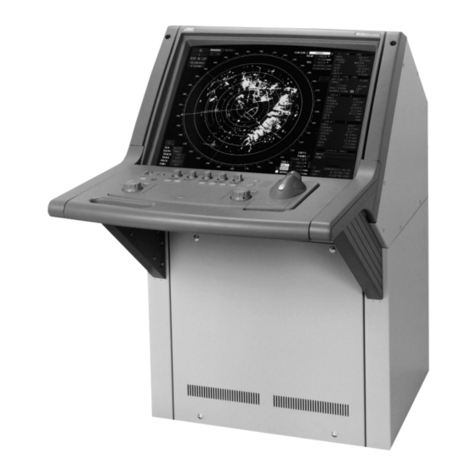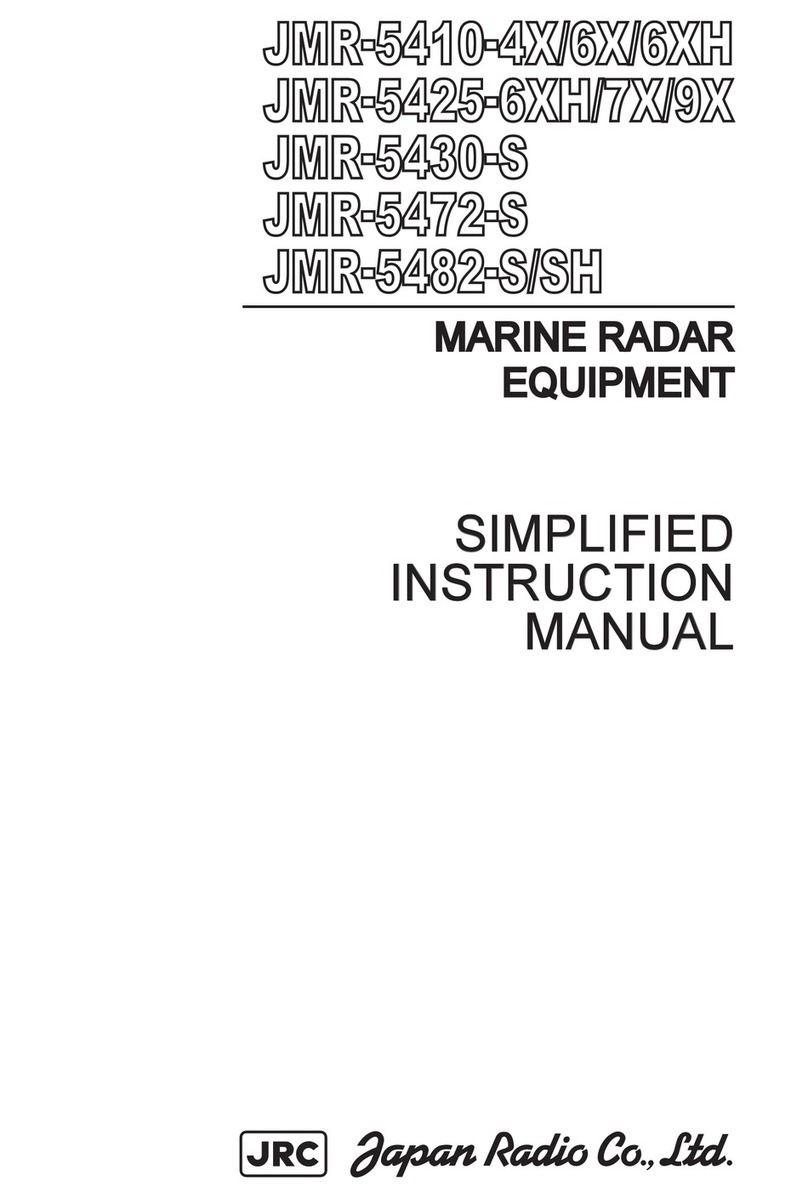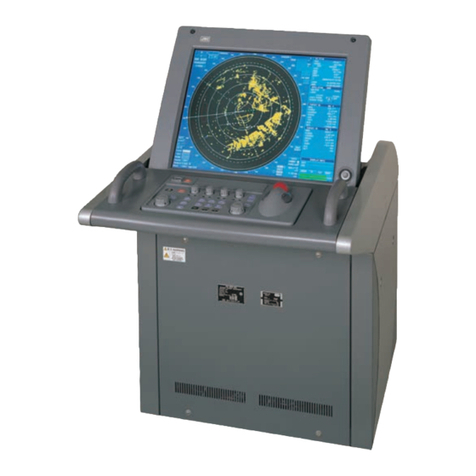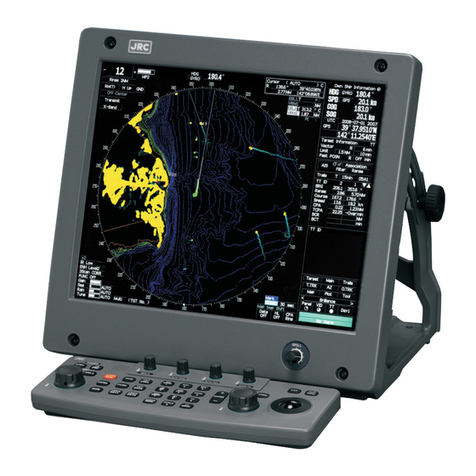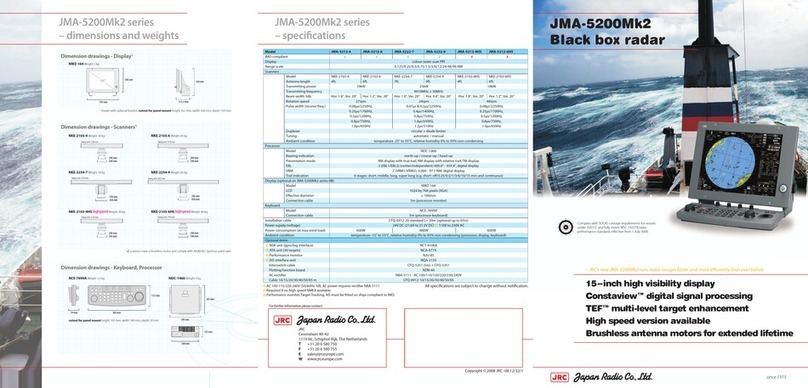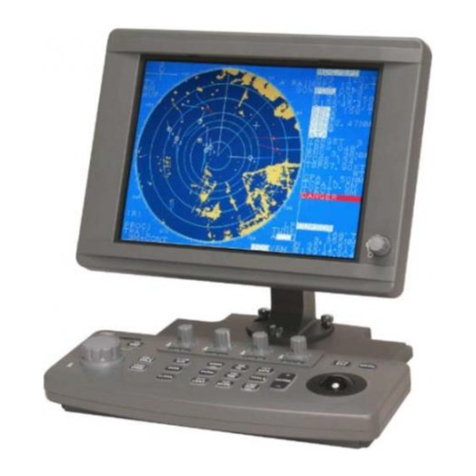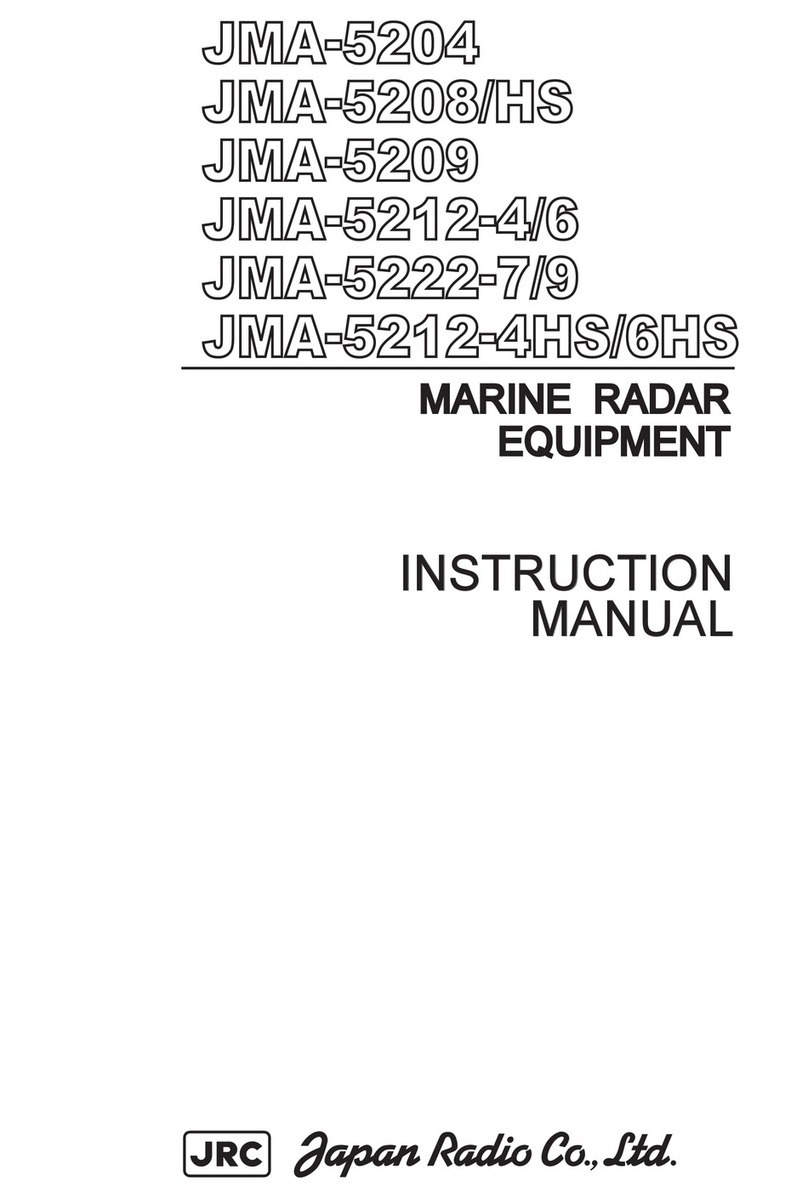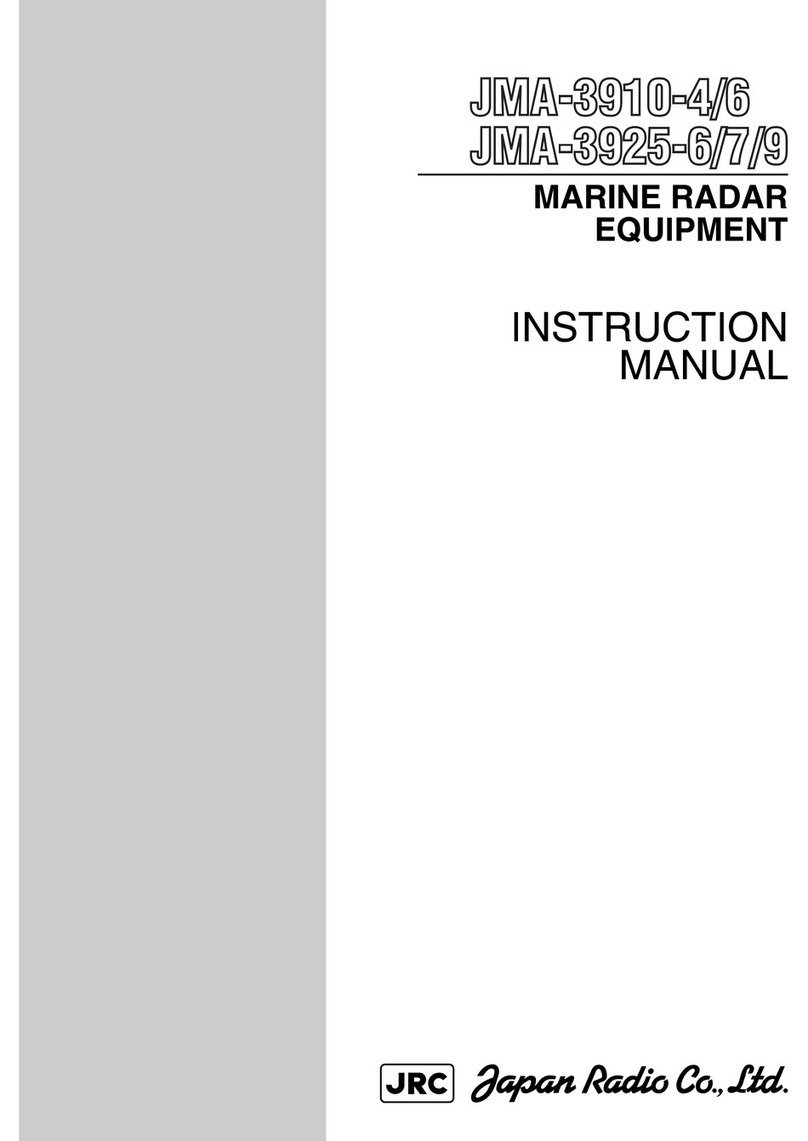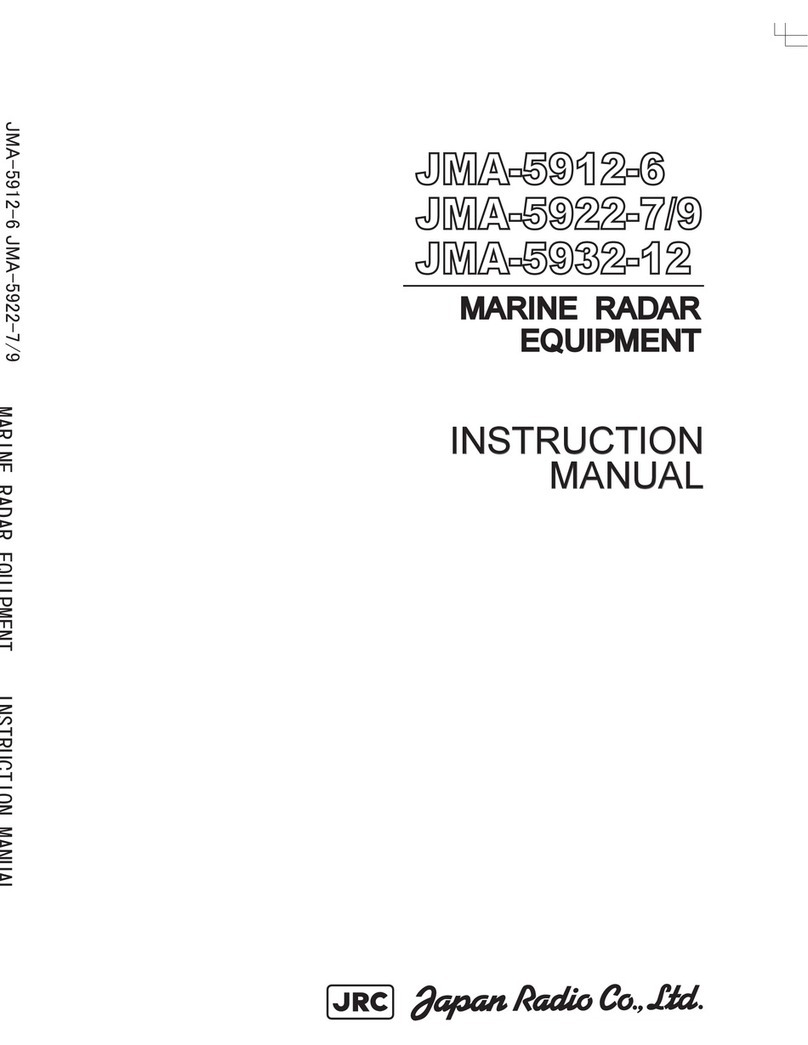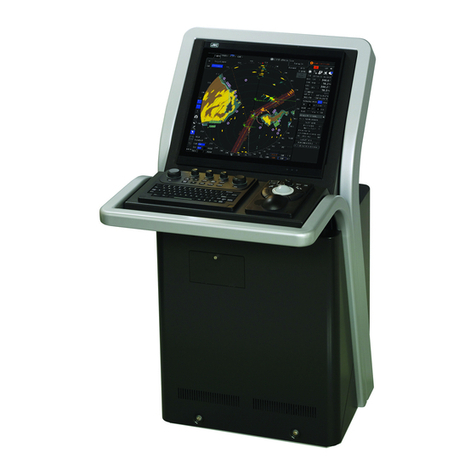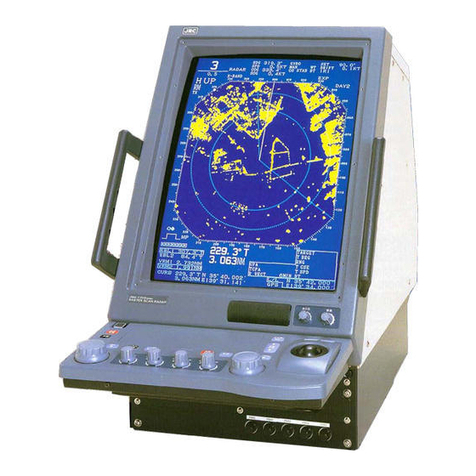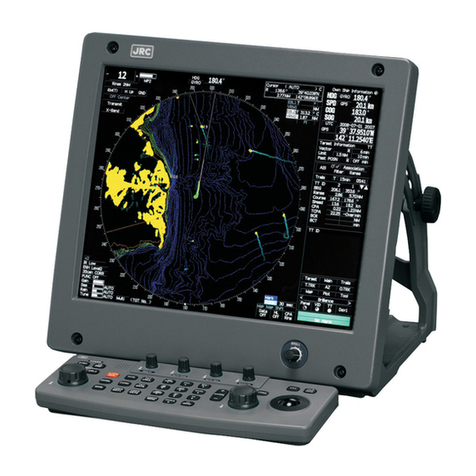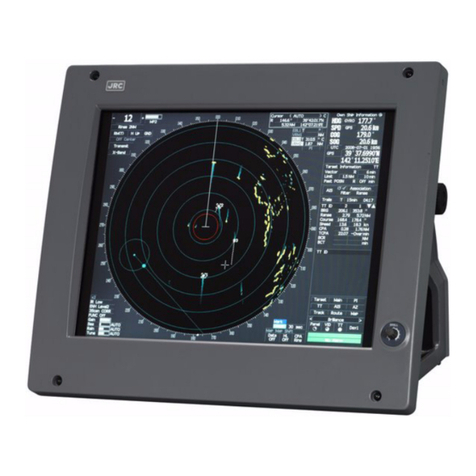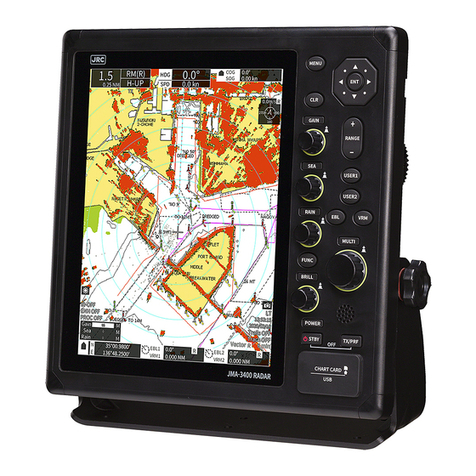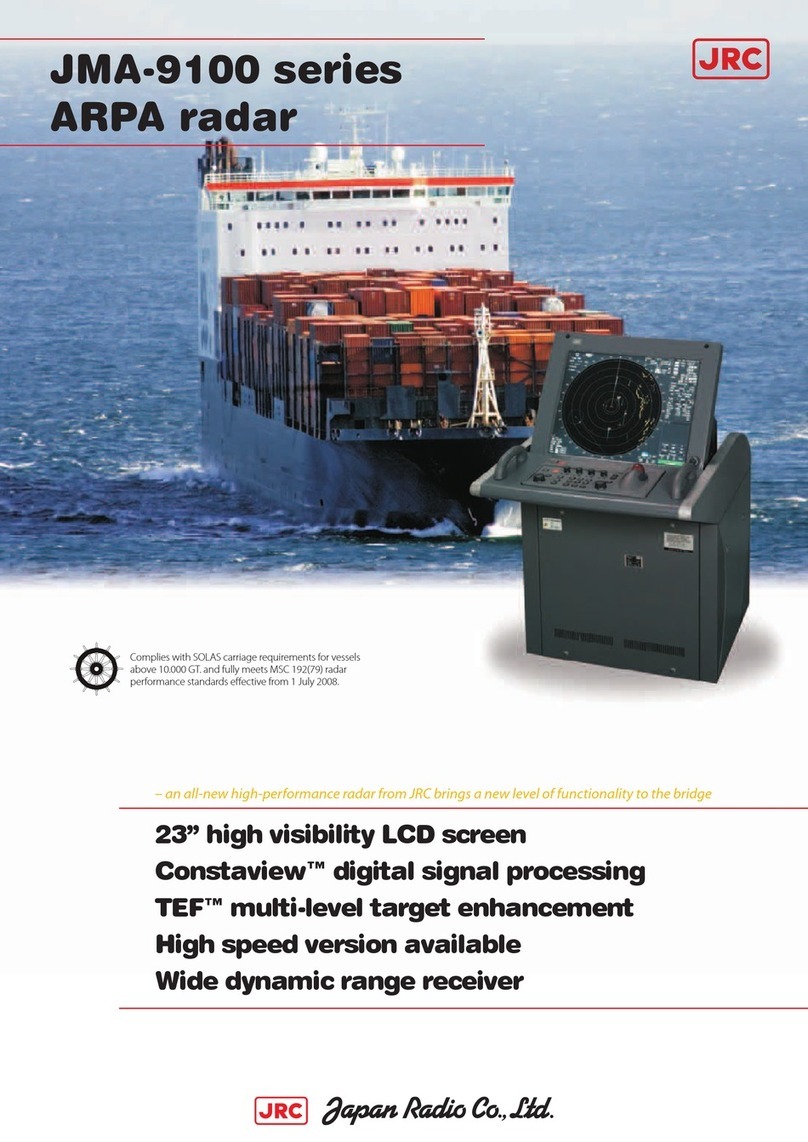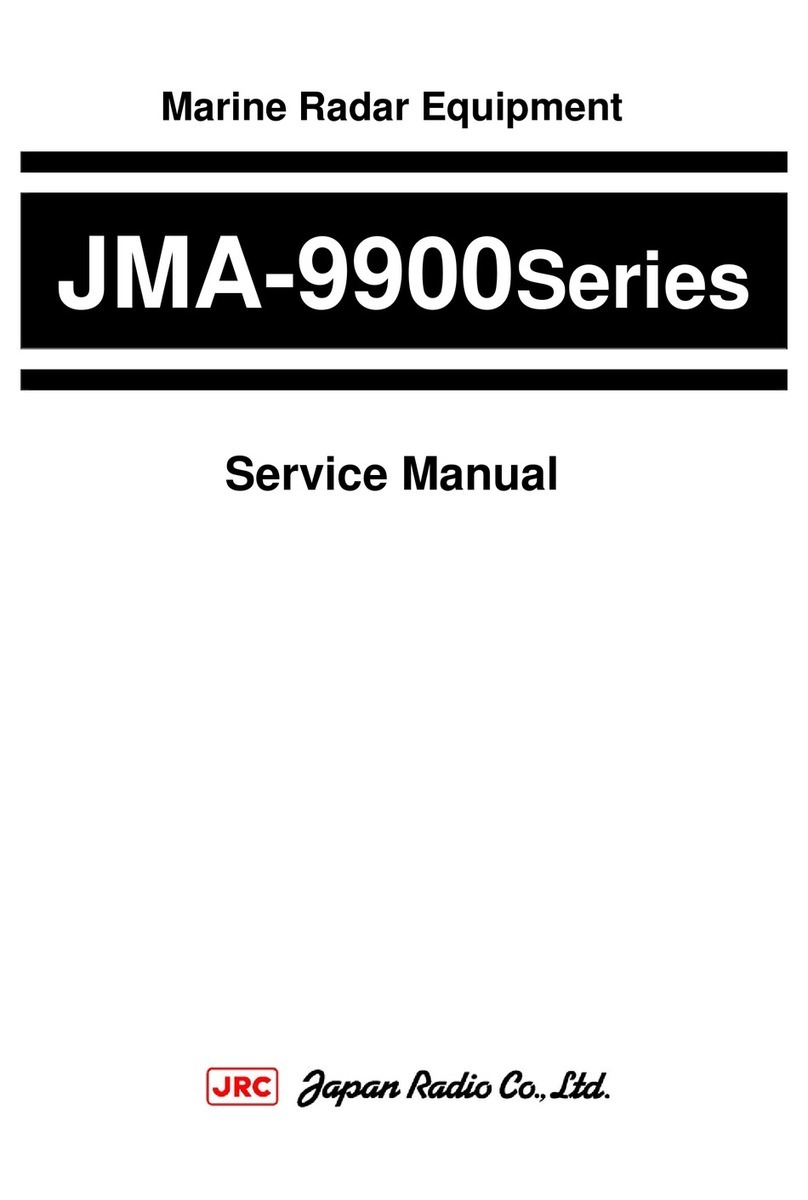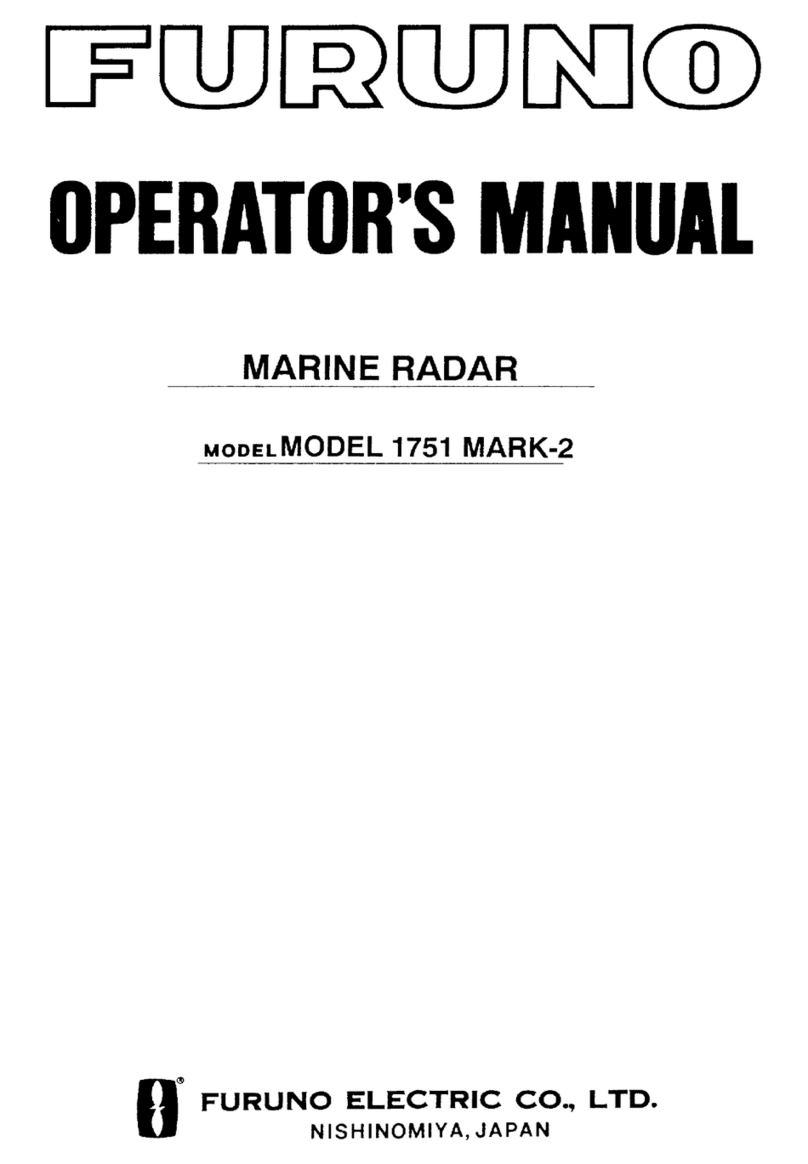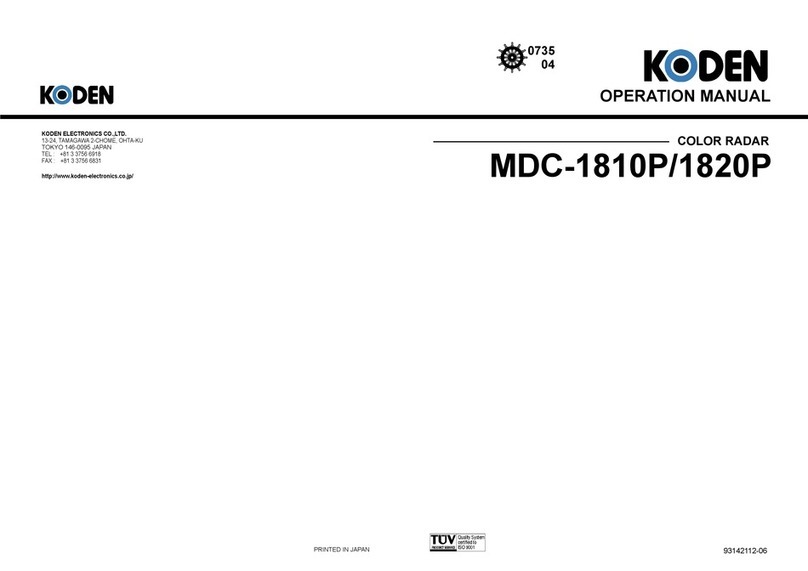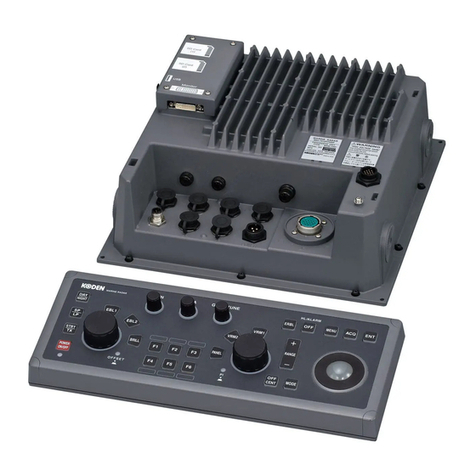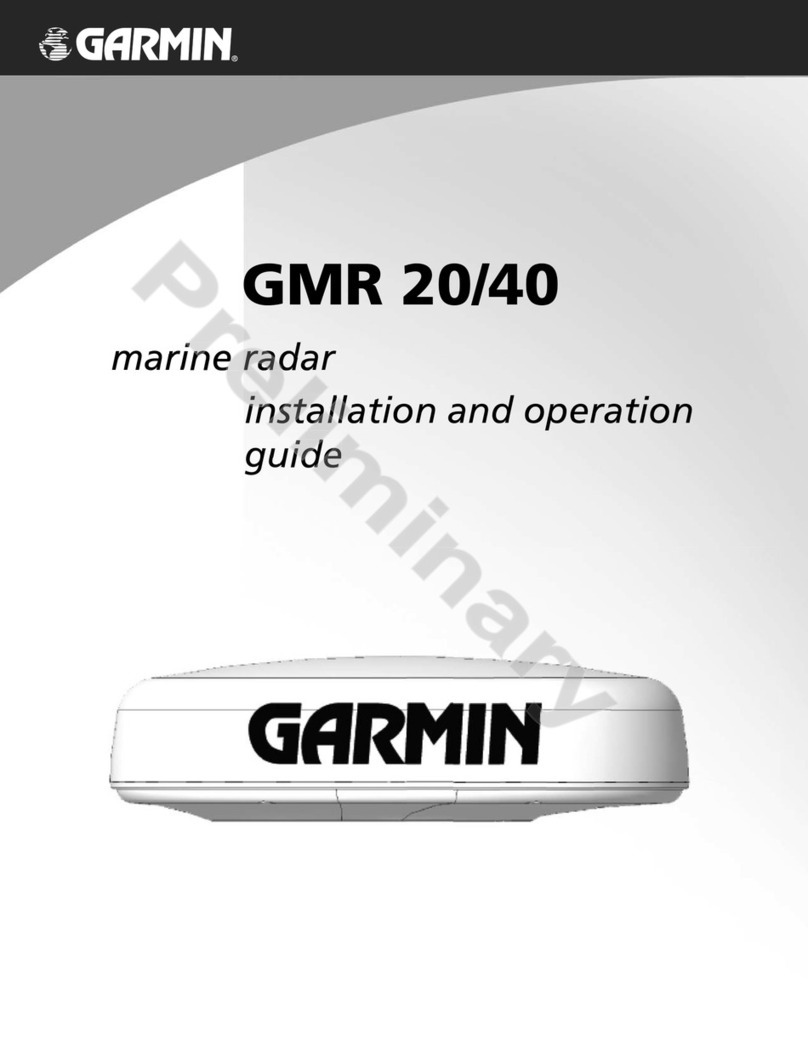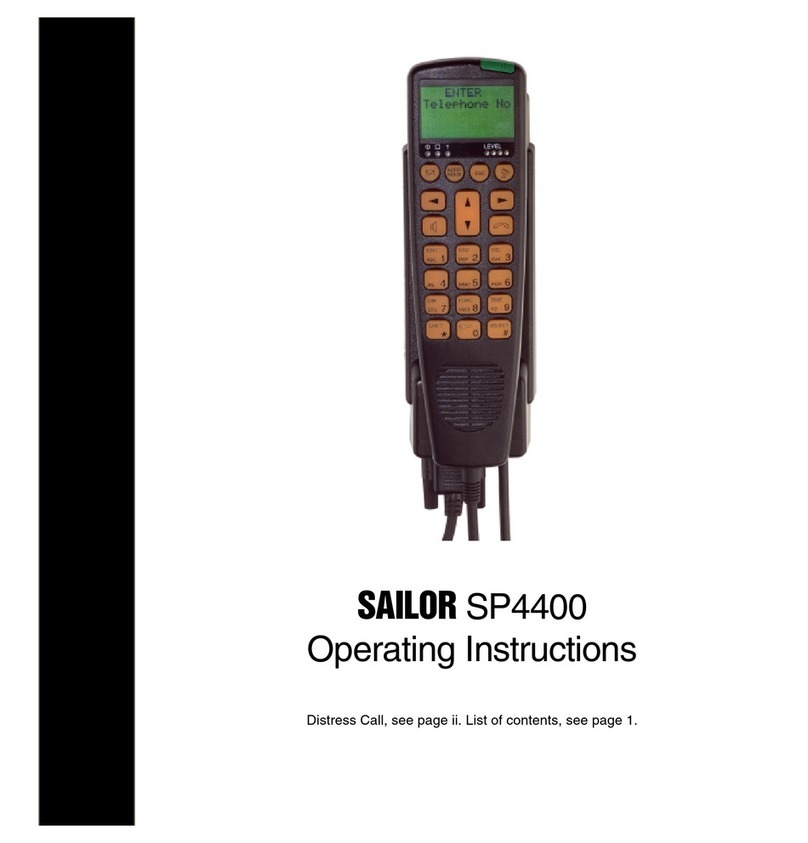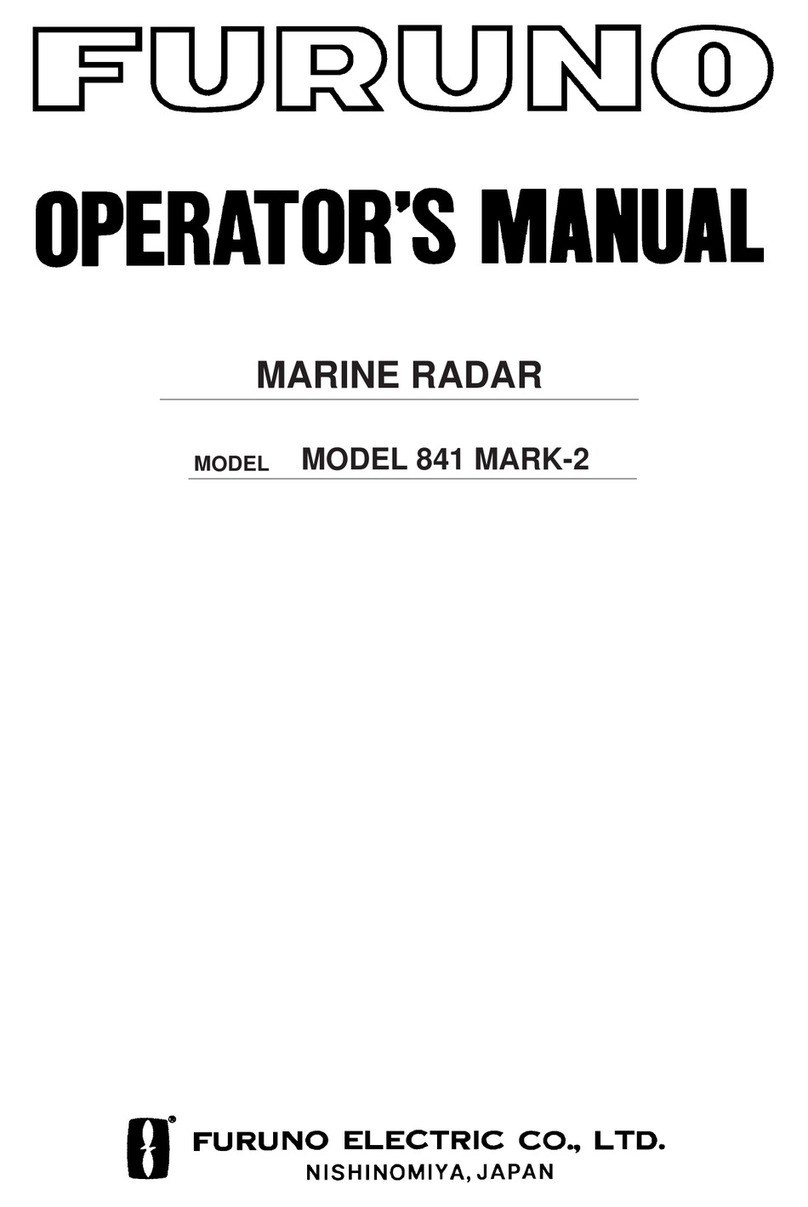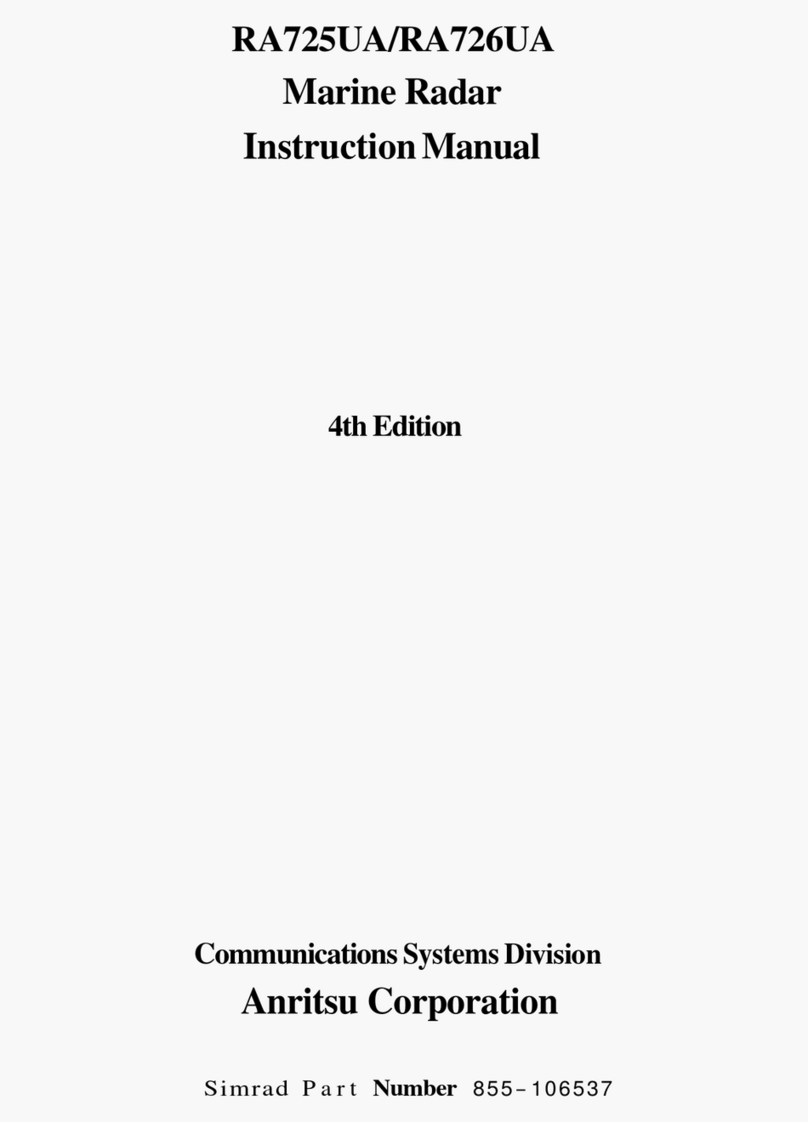9
TUNE PRESET ..................................................................... 38
Relative BEARING alignment ................................................ 39
DISPLAY TIMING ................................................................ 39
STC PRESET ......................................................................... 39
Connecting Personal Computer ....................................................40
Inserting a Chart Card ..................................................................41
Removing a Chart Card.................................................................41
SECTION 3 Operation ........................................... 42
Screen Layout ................................................................................42
Control Panel ................................................................................45
Rear Panel .....................................................................................47
Basic Operations ...........................................................................48
The Power Control (Turning the Radar ON and OFF) ................ 49
LCD Backlight and Contrast Control........................................... 49
Display Modes.............................................................................. 49
Vessel’s Information/Waypoint’s Information................................ 53
Graph Display .............................................................................. 54
Finding Function.......................................................................... 54
Using the Jog Dial ........................................................................ 55
Using the Joy Stick ....................................................................... 55
Changing CURSOR Operation in RADAR/CHART Mode ........ 55
General MEMU Operation .......................................................... 55
Buzzer ON/OFF .......................................................................... 56
Setting LANGUAGE ................................................................... 56
Radar Operation ...........................................................................57
Selecting a RANGE ...................................................................... 57
Adjusting Receiver Sensitivity ....................................................... 58
Adjusting TUNING ..................................................................... 58
Reducing SEA CLUTTER ........................................................... 58
Adjusting RAIN CLUTTER ........................................................ 59
Setting OFFSET .......................................................................... 59
Range Measurement ..................................................................... 59
Bearing Measurement ................................................................... 60
Changing CURSOR Operation Mode
in RADAR/CHART Screen ..................................................... 60
RADAR Operating Menu ............................................................ 61
RINGS ......................................................................................... 61
DISPLAY MODE (BEARING) ................................................... 61
